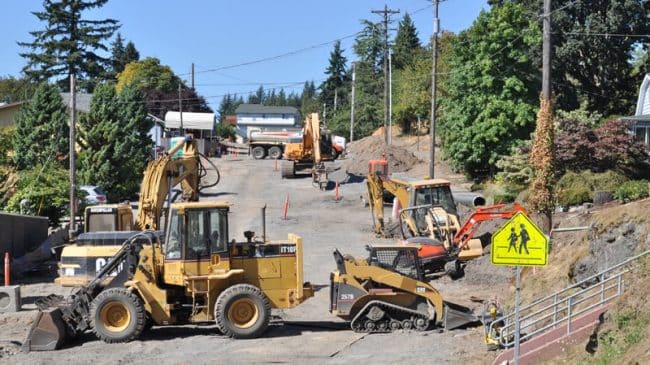Executive Summary
This report quantifies the magnitude of traffic congestion and the cost of its removal through the provision of additional capacity. Other studies in the Galvin Mobility Project examine the role of other means of addressing congestion as well as financing, project management, and other issues that go along with adding road capacity in urban areas.
We define and quantify severe congestion, in which peak-hour traffic volumes exceed road capacity, and estimate future congestion if trends continue. With the help of 32 participating urbanized areas, the report uses sophisticated traffic modeling techniques to determine how much additional capacity will be needed to relieve severe congestion. These findings are then extended to all 403 urbanized areas. The report then estimates the cost of providing that additional capacity. These costs include construction in each state, major bridge widenings, adjustments for induced travel, and requirements for some elevated or tunnel sections. Detailed results are provided for each city and state. We also provide a simplified state-level assessment for rural areas and for moderate urban congestion.
This report finds that severe traffic congestion is pervasive in large regions and is worsening throughout the United States. In the future even small, urbanized areas are likely to experience congestion common in mid-sized areas today. The cause of this increase is not wastefulness but increasing population and preferences for private mobility, combined with limited additions to road capacity. Nationwide, the number of lane-miles of severely congested roads is expected to increase from about 39,500 in 2003 to 59,700 in 2030. To relieve severe congestion by providing additional capacity, an additional 104,000 lane-miles of capacity (about 6.2 percent of current lane-miles) will be needed, costing about $533 billion over 25 years, in 2005 dollars. The amount needed-about $21 billion per year-is about 10-15 percent of the federal highway program over 25 years, about 28 percent of the cost of present urban transportation plans, and about 39 cents per day per commuter trip. However, the travel time savings are estimated at about 7.7 billion hours annually, so the cost per hour of delay saved is about $2.76. If moderate congestion and rural congestion are also to be addressed, an additional $304 billion will be needed.
We also find that congestion relief through provision of additional capacity is quite feasible, given current budgets. The benefits of an investment in additional capacity would be substantial. In addition to reduced travel time, other benefits include smoother traffic flow, reduced accidents, improved air quality through lower emissions, lower fuel use and operating costs, more reliable travel, lower logistical costs for manufacturing and delivery, more choices of jobs for workers and businesses and wider choices for consumers.
» Press Release
» List of Most Congested Cities
» List of Most Congested States
» USA Today Story
Interactive Maps
» Most Congested Cities in America in 2030
» Ranking the States by Congestion and Costs to Reduce Traffic
Full Study
» Building Roads to Reduce Traffic Congestion in America’s Cities: How Much and at What Cost? (.pdf)
State-by-State Examination
Shows how congested each state and its major cities will be in 2030. Details how many lane miles are needed and at what cost. Projects the number of hours we can avoid sitting in traffic each year by relieving congestion.
» State-by-State Analysis of Future Congestion and Capacity Needs (.pdf)
| » Alabama » Alaska » Arizona » Arkansas » California » Colorado » Connecticut » Delaware » Florida » Georgia » Hawaii » Idaho » Illinois » Indiana » Iowa » Kansas » Kentucky |
» Louisiana » Maine » Maryland » Massachusetts » Michigan » Minnesota » Mississippi » Missouri » Montana » Nebraska » Nevada » New Hampshire » New Jersey » New Mexico » New York » North Carolina » North Dakota |
» Ohio » Oklahoma » Oregon » Pennsylvania » Rhode Island » South Carolina » South Dakota » Tennessee » Texas » Utah » Vermont » Virginia » Washington » Washington, D.C. » West Virginia » Wisconsin » Wyoming |
Appendices to Full Study
Appendix A (.pdf)
Appendix B: Detailed Methodology (.pdf)
Appendix C: Detailed City-by-City Data (MS Excel)
Appendix D: State Information (MS Excel)
Appendix E: State Information (MS Excel)
Appendix F: State Information, Rural (MS Excel)
Appendix G: Regional Urban Maps of Travel Time Indices (.pdf)
Appendix H: Risk Analysis of the Costs to Relieve Congestion (.pdf)
Appendix I: References (.pdf)

